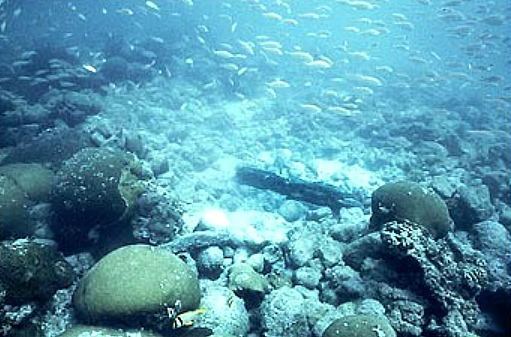NRHP Reference # 01000530 Designated FUAP 1989 Added to NRHP 1 April 1989 | FUAP # 2 Established April 1, 1989 Nearest city Islamorada | |
 | ||
Management National Park Service, Florida Department of Environmental Protection Similar Lignumvitae Key Botanical, Watson Island State For, Lake June in Winter Scrub Sta, Caloosahatchee National Wildlife R, Ralph E Simmons Memorial | ||
San Pedro Underwater Archaeological Preserve State Park is a Florida State Park located in 18 feet (5.5 m) of water, approximately 1.25 nautical miles (2.32 km) south of Indian Key. It became the second Florida Underwater Archaeological Preserve when it opened to the public in 1989. The heart of the park is the San Pedro, a submerged shipwreck from a 1733 Spanish flotilla, around which visitors can dive and snorkel. The wreck was added to the U.S. National Register of Historic Places on May 31, 2001.
Contents
- Map of San Pedro Underwater Archaeological Preserve State Park Florida USA
- About The 1733 Spanish Fleet flotillaEdit
- Recreational ActivitiesEdit
- HoursEdit
- References
Map of San Pedro Underwater Archaeological Preserve State Park, Florida, USA
About The 1733 Spanish Fleet (flotilla)Edit
Much like the 1715-Fleet disaster above, the 1733 Fleet was another entire Spanish convoy (except for one ship) lost in a hurricane off Florida. The lesser severity of the 1733 hurricane (which struck the fleet on July 15) and the shallowness of the wrecksites in the Keys, however, made for many survivors and even left four ships in good enough condition to be re-floated and sent back to Havana. A very successful salvage effort by the Spanish soon commenced, bringing up even more than the 12 million pesos of precious cargo on the Fleet’s manifest (thanks to the usual contraband).
The wrecks themselves are spread across 80 miles, from north of Key Largo down to south of Duck Key, and include the following galleons (but note there is not universal agreement as to which wrecksite pertains to each galleon, and also note that each name is a contemporaneous abbreviation or nickname): El Pópulo, El Infante, San José, El Rubí (the capitana, or lead vessel of the fleet), Chávez, Herrera, Tres Puentes, San Pedro, El Terri (also spelled Lerri or Herri), San Francisco, El Gallo Indiano (the almiranta, or rear guard of the fleet), Las Angustias, El Sueco de Arizón, San Fernando, and San Ignacio. This last ship, San Ignacio, is believed to be the source of many silver coins (and even some gold coins) found in a reef area off Deer Key known as “Coffins Patch,” the southwesternmost of all the 1733-Fleet wrecksites. In addition, many other related sites are known, mostly the wrecks of tag-along ships that accompanied the fleet proper.
The first and arguably most famous of the wrecks of the 1733 Fleet to be located in modern times was the Capitana El Rubí, which was discovered in 1948 and salvaged principally in the 1950s by Art McKee, whose Sunken Treasure Museum on Plantation Key housed his finds for all to see. Throughout the next several decades, however, the wrecksites in the Keys became a virtual free-for-all, with many disputes and confrontations, until the government created the Florida Keys National Marine Sanctuary in 1990. The removal of artifacts from any of the sites is prohibited today.
In contrast to the 1715 Fleet, and because of the extensive Spanish salvage in the 1730s, the finds by modern divers have been modest, especially in gold coins, of which there are far more fakes on the market than genuine specimens. Nevertheless, the 1733 Fleet has been a significant source for some of the rare Mexican milled “pillar dollars” of 1732-1733 as well as the transitional “klippe”-type coins of 1733.
Recreational ActivitiesEdit
Activities include boating, canoeing, snorkeling, scuba diving, fishing and swimming.
HoursEdit
Florida state parks are open between 8 a.m. and sundown every day of the year (including holidays).
